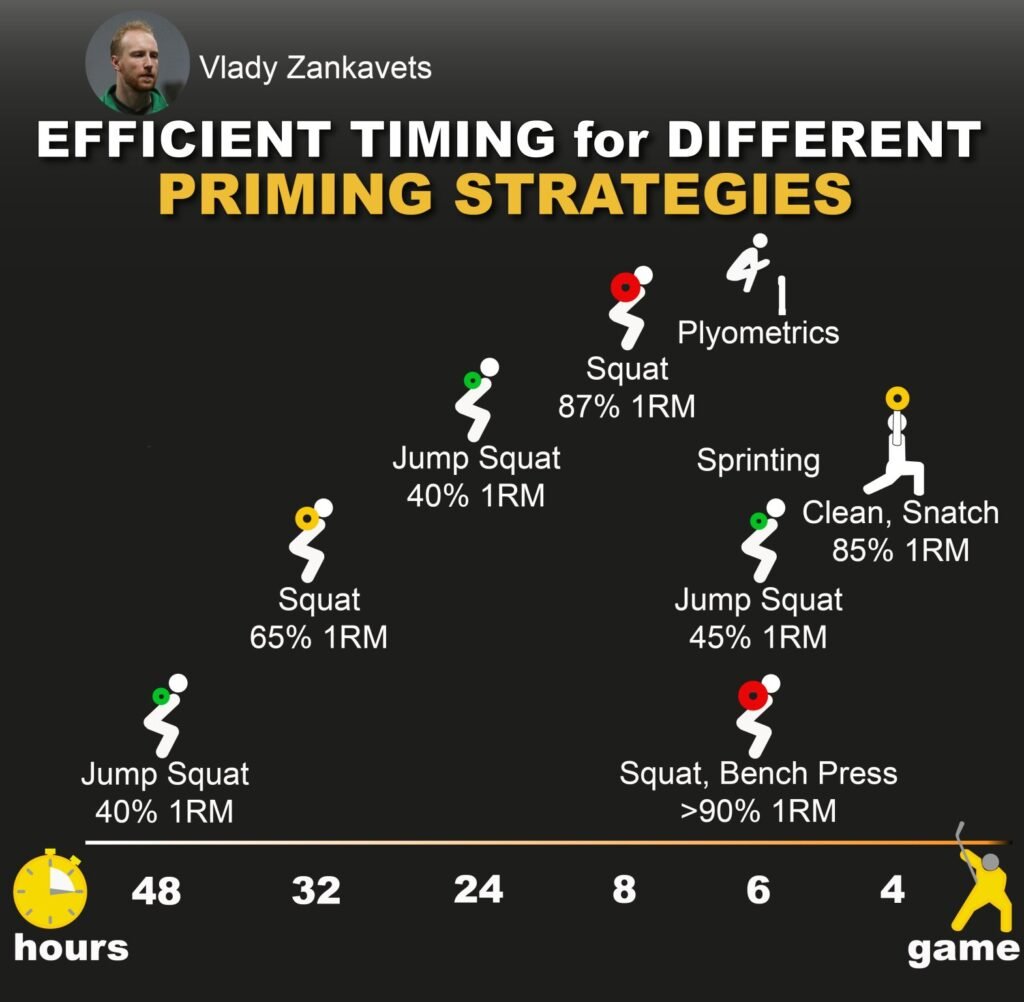

While preparing an athlete or team to an upcoming competition it is important not only to find an efficient combination of different training modalities but also discover a perfect timing. The review by Holmberg with colleagues [1] will stimulate new ideas on pre-game preparation and when to apply them.
High-Intensity Strength: Such type of training leads to neuromuscular function depression immediately post-workout, raised within 3-8 hours and gets diminished again between 11 and 22 hours [2].
Medium-Intensity Strength: According to the research, medium-intensity resistance training is the best approach when applied the day before the competition [2, 3].
Low-Intensity Ballistics: this activity requires a long acceleration phase which in turn produces greater neural drive. Desired changes in neuromuscular activation are produces when the maximal effort to accelerate the load is applied 6, 24 and 48 hours pre-competition [4].
Sprinting: running with maximal speed diminishes neuromuscular performance immediately post-training session, which is restored within 2-6 hours, and again depressed 24 hours post-practice [5]. The latter can be explained by the fact that activities involving high forces and rapid angular velocities through large ranges of motion are associated with muscle damage, which generally peaks between 24 and 48 hours [6].
Plyometrics: ability to produce force rapidly depends primarily on the increase of muscle activation at the onset of the contraction, particularly as a result of increased motor unit discharge rate [7], which might remain elevated 6 hours post-training. Afterwards performance decreases, likely due to muscle damage and associated inflammation [8].
Subjects: highly trained athletes tend to demonstrate more pronounced performance enhancement following priming strategies implementation comparing to less trained counterparts [1].
Conclusion: the strongest evidence supports implementation of low-volume, high-intensity priming exercises performed with maximal movement speed intention by highly trained athletes 6 hours prior competition [1].
Thank you!
References:
1. Holmberg, PM, et al. Factors modulating the priming response to resistance and stretch-shortening cycle exercise stimuli.
2. Raastad, T, Hallen, J. Recovery of skeletal muscle contractility after high- and moderate-intensity strength exercise.
3. Harrison, PW, et al. Time-course of neuromuscular, hormonal, and perceptual responses following moderate- and high-load resistance priming exercise.
4. de Villarreal, ESS, Gonzalez-Badillo, JJ, Izquierdo, M. Optimal warm-up stimuli of muscle activation to enhance short and long-term acute jumping performance.
5. Johnston, M, et al. Neuromuscular, physiological and endocrine responses to a maximal speed training session in elite games players.
6. Damas, F, et al. Susceptibility to exercise-induced muscle damage: A cluster analysis with a large sample.
7. Maffiuletti, NA, et al. Rate of force development: Physiological and methodological considerations.
8. Armstrong, RB. Initial events in exercise-induced muscular injury.